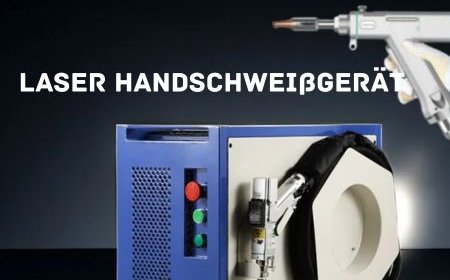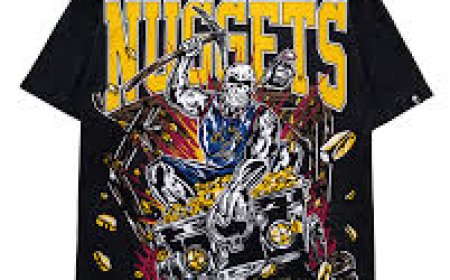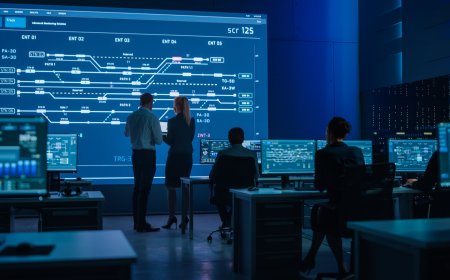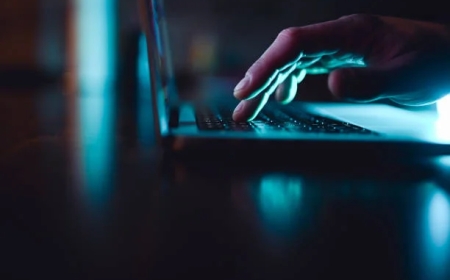Why Digitizing Files for Embroidery is Essential for Quality Stitching
Your brand deserves embroidery that looks as good as everything else you do. Start with proper digitizing, and the quality will speak for itself - one perfect stitch at a time.

Embroidery has this magical quality that makes logos pop and designs come alive in a way no other decoration method can match. But here's the secret no one tells you - that perfect stitching you admire doesn't happen by accident. It all comes down to one crucial step that happens long before the needle touches fabric: digitizing. Lets have a detailed overview ondigitizing files for embroidery.
Think of digitizing like writing sheet music for your embroidery machine. You wouldn't expect an orchestra to play a masterpiece if you just hummed a tune at them, right? Same goes for embroidery. That beautiful design in your head or on your computer screen needs to be translated into a language machines understand. And how well that translation happens makes all the difference between embroidery that makes people say "wow" and something that looks like it was done in someone's garage.
The Nuts and Bolts of Embroidery Digitizing
At its core, digitizing is the process of converting artwork into a series of commands that tell an embroidery machine exactly how to move. But it's so much more than just tracing an image. A skilled digitizer makes hundreds of tiny decisions that affect the final product:
- Which stitch types to use where (satin for crisp edges, fill stitches for solid areas)
- How dense to make those stitches (too many and the fabric puckers, too few and it looks patchy)
- What direction the stitches should flow (this affects both appearance and durability)
- Where to place underlay stitches (the hidden foundation that keeps everything stable)
- How to compensate for fabric stretch (different materials behave differently under the needle)
These might sound like technical details, but they're what separates professional-looking embroidery from amateur work. Get them wrong, and even the simplest design can turn into a mess. Get them right, and you've got embroidery that looks like it came from a high-end boutique.
What Happens When Digitizing Gets Skipped
You'd be surprised how many businesses try to cut corners with their embroidery files. Maybe they use auto-digitizing software that promises instant results. Or they take a file meant for one type of fabric and try to use it on another without adjustments. Sometimes they even just send a JPEG to their embroidery shop and hope for the best.
Here's what actually happens in these scenarios:
The auto-digitized design comes out looking blocky and mechanical, with obvious computer-generated patterns where there should be smooth curves. The repurposed file puckers on the new fabric because the stitch density was never adjusted. The JPEG conversion turns small text into an unreadable blob where all the letters run together.
In every case, what seemed like a time or money saver ends up costing more - in wasted materials, frustrated staff, and branding that looks sloppy instead of polished.
How Professional Digitizing Pays for Itself
Here's the counterintuitive truth: spending money on proper digitizing actually saves you money in the long run. Think about it:
- Fewer ruined garments- No more tossing expensive polos because the embroidery came out distorted
- Less machine downtime- Proper files don't cause thread breaks or needle breaks that stop production
- Faster production- Optimized stitch paths mean less time spent embroidering each item
- Longer-lasting designs- Correct density and underlay prevent premature wear and fraying
When you factor in all these benefits, that $20-$50 you spend on professional digitizing per design starts looking like one of the smartest investments you can make for your branded merchandise.
The Fabric Factor
One of the biggest reasons professional digitizing matters is that embroidery isn't one-size-fits-all. The same design needs to be adjusted depending on whether it's going on:
- Stretchy performance fabricthat moves with the wearer
- Stiff capswith curved, unforgiving surfaces
- Delicate dress shirtsthat can't handle dense stitching
- Thick outerwearthat needs extra penetration
A skilled digitizer doesn't just convert your design - they adapt it for whatever material you're using. This is why the pros always ask what you'll be embroidering on before they start working. That same company logo might need three different versions for your employee polos, winter jackets, and promotional bags.
Small Details, Big Impact
Some of the most important aspects of digitizing are things most people would never think about:
Pull compensation- Accounting for how much the fabric will distort as stitches pull it tighter
Stitch sequencing- Determining the optimal order to sew elements so nothing gets distorted
Trims and ties- Planning where the machine should cut and tie threads to minimize loose ends
Push and pull effects- Compensating for how certain stitch directions affect fabric tension
These invisible adjustments are what make the difference between embroidery that lies perfectly flat and designs that pucker or distort in strange ways.
When Digitizing Matters Most
While all embroidery benefits from proper digitizing, it becomes absolutely critical when:
- Your design hassmall text(anything under 1/4 inch tall needs special treatment)
- You're usingspecialty threadslike metallics or glow-in-the-dark
- Your logo includesgradient color effects
- You need3D puff embroideryeffects
- You're working withdifficult fabricslike mesh or waterproof materials
In these cases, trying to skip professional digitizing is practically guaranteeing disappointing results.
The Evolution of Digitizing
Embroidery digitizing has come a long way from its industrial roots. Today's leading digitizers combine technical knowledge with artistic sensibility:
- They understand how light interacts with different stitch directions
- They create optical illusions with clever stitch placement
- They can mimic brush strokes or pencil lines with thread
- They develop signature styles that become part of a brand's identity
This elevated approach to digitizing is why we're seeing embroidery used in ways no one imagined possible a decade ago - from photorealistic portraits to designs that seem to float above the fabric.
Choosing Your Digitizing Partner
Not all digitizing services are created equal. When selecting who will handle your files, look for:
- Experience with your specific type of projects(corporate logos vs. fashion designs)
- Samples of previous workon similar items to what you'll be embroidering
- Clear communicationabout their process and what they need from you
- Reasonable revision policiesin case adjustments are needed
- Fast turnaround timesthat fit your production schedule
Top services likeDigitizing Buddy, Absolute Digitizing, and Cool Embroidery Designshave built their reputations on consistently delivering files that stitch out perfectly the first time.
The Bottom Line
At the end of the day, embroidery digitizing isn't an optional extra - it's the foundation of quality stitching. That file determines whether your design looks cheap or premium, whether it lasts through two washes or twenty, whether it makes your brand look professional or amateurish.
The good news? With today's digitizing services, getting professional-quality files is more accessible than ever. For less than the cost of a single embroidered polo shirt, you can have a digitized file that will produce perfect results every time it's used.
So before you send your next embroidery order, ask yourself: is your design being interpreted by someone who understands both the art and science of digitizing? Because when it comes to making an impression with embroidery, the work that happens before stitching begins is just as important as the stitching itself.
Your brand deserves embroidery that looks as good as everything else you do. Start with proper digitizing, and the quality will speak for itself - one perfect stitch at a time.




















































